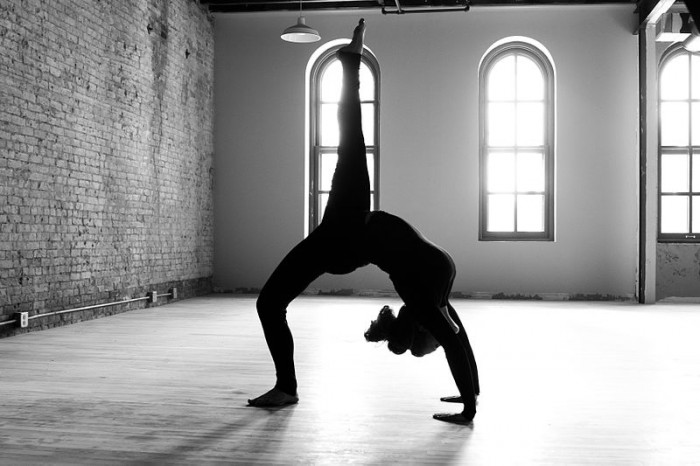I instantly knew that I wanted to teach yoga.
I had the bug and I wanted to share it.
So I signed up for teacher training and my mentors emphasized from the very beginning, “Don’t teach more than you practice.”
I used to pull yoga double headers before I started teaching.
Practicing twice a day was the norm. I was like a sponge. Now I’m lucky if I get to class twice a week.
When I started teaching six years ago, I would have had to practice twice a day, seven days a week in order to match the 14 classes I taught per week. I quickly realized that if I was going to make a decent living teaching yoga, the commitment to practice as much as I taught was almost impossible.
“Getting my practice in” while teaching a class couldn’t count. Good teachers aren’t in the front of the room on their mat. They’re walking around, offering encouragement and assistance to their paying students.
Students show up to class because they want instruction.
If they wanted a demonstrator, they’d be doing a DVD at home.
Today, I teach less than I did in the beginning of my career, but now I teach in all of the primetime slots. If I want to get to a class with my favorite local teacher, she’s teaching at the same time as me.
When I do get to class, I find it’s almost impossible for me to turn off my teacher brain.
This makes me feel like a super duper yoga snob, but it seriously interferes with my practice when I hear teachers give nonsensical, incorrect alignment cues or offer unsafe sequencing.
When I practice at the school where I teach, I inevitably end up interacting with tons of other teachers and students.
It is extremely heartwarming to have a sense of community at my workplace and nothing compares to the energy of a group class, but it also means that I can never just be an anonymous student.
For all of these reasons, I often opt to practice at home.
Be honest, teachers: At home, how often are you getting a full practice in?
I find that I cut corners. Sometimes I even skip Savasana! I definitely did not get into this business to skip Savasana.
If my home practice feels incomplete and I suddenly realize that I haven’t been to a group class in weeks, a warning light goes off in my mind. Then I think about how busy I’ve been and I start to rationalize. If I’m inspiring my students, isn’t that enough? I may not do handstand everyday but I still feel like I practice yoga everyday in the way that I conduct myself and choose to interact with others.
In the end, just like everything, my asana practice ebbs and flows.
When it’s flowing, I can tell. When I’m truly committed to a consistent practice, everything else just falls into place. It’s that simple.
When it’s ebbing, I have a responsibility to myself and to my students to look at my priorities. If I’m not practicing, it shows. My theme and sequencing become stagnant and my creativity dwindles.
Eventually, I stop coming up with excuses and I get my butt back to class. Any class.
Because whether it’s my favorite class or my least favorite class, there’s always something to learn. I find a way to make it work so that I can continue to show up in my life in a way that feels most authentic to me.
One of my trainers once said, “I know a lot of great teachers who aren’t strong practitioners. And I know a lot of strong practitioners who aren’t great teachers.”
Imagine the powerhouse of a person who is both a great practitioner and a great teacher.
~
~
Love elephant and want to go steady?
Sign up for our (curated) daily and weekly newsletters!
Apprentice Editor: Carrie Marzo/Editor: Emily Bartran
Photo: Joel Nilsson / Wikimedia Commons












Read 7 comments and reply